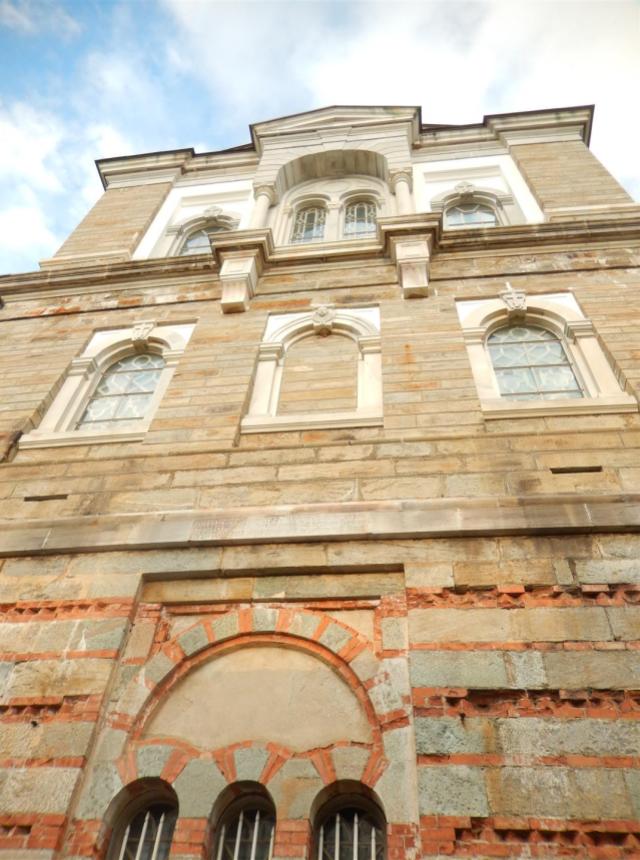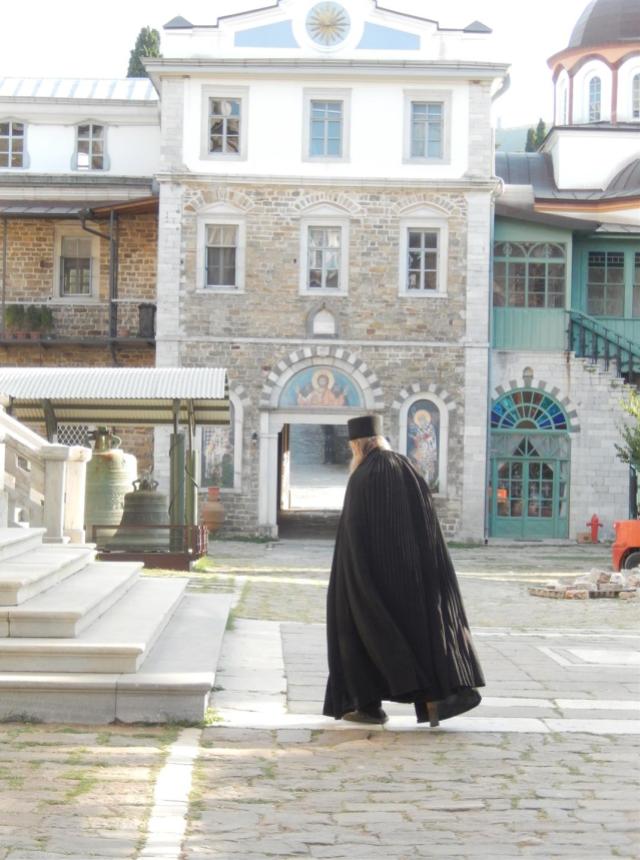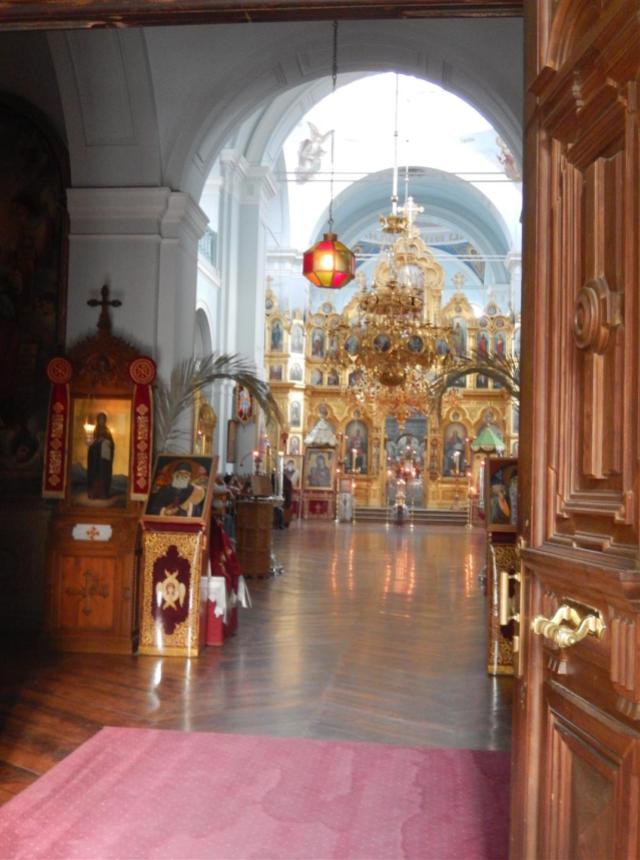 The main church (E on the plan), build in 1900, was until recently the biggest church on the Balkan. It is enormous and ment for large groups of pilgrims, like the ones you see below on the historic picture from 1900.
The main church (E on the plan), build in 1900, was until recently the biggest church on the Balkan. It is enormous and ment for large groups of pilgrims, like the ones you see below on the historic picture from 1900.
 The same spot as the black and white picture above, seen from building J on the plan.
The same spot as the black and white picture above, seen from building J on the plan.
In this post I will show you the pictures that I took while walking around the church. This is a picture of the most ruined wings of the North/West side of the skete, shot behind building J. If you turn your head to the right you will see this part of the NW wing:
This is a picture of the most ruined wings of the North/West side of the skete, shot behind building J. If you turn your head to the right you will see this part of the NW wing: NW wing of skiti Andreou
NW wing of skiti Andreou And here we see the NW wall of the main church on your right hand. Behind pilgrim Jizte in his blue shirt is the gate to the guest quarters and right from him is the entrance to the trapeza in de basement of the church.
And here we see the NW wall of the main church on your right hand. Behind pilgrim Jizte in his blue shirt is the gate to the guest quarters and right from him is the entrance to the trapeza in de basement of the church. On this photo I already walked around the corner of the church and took a shot of the backside.
On this photo I already walked around the corner of the church and took a shot of the backside.  Above the arches this text shows up, which I could not read/translate.
Above the arches this text shows up, which I could not read/translate. When you turn the next corner at the back of the building and go down a bit, you see renovation activities of the South/East wing and again a part of the back of the church.
When you turn the next corner at the back of the building and go down a bit, you see renovation activities of the South/East wing and again a part of the back of the church.  A view of the South side of the church with the bronze bells at spot N and the entrance (A) on the left.
A view of the South side of the church with the bronze bells at spot N and the entrance (A) on the left. Here you see another text inscribted in the wall: it must be in Russian. Who can help translating these texts?
Here you see another text inscribted in the wall: it must be in Russian. Who can help translating these texts?
 The South wall of the church and bells – N (photo by Jitze Bakker)
The South wall of the church and bells – N (photo by Jitze Bakker) An iron door in Andreou.
An iron door in Andreou. These are the steps that lead to the main church, with the gate A in the background. Notice the monk with the wooden leg, who slept that night on a bench in the corridor of the guesthouse!
These are the steps that lead to the main church, with the gate A in the background. Notice the monk with the wooden leg, who slept that night on a bench in the corridor of the guesthouse! Inside the main church
Inside the main church

 The Tomb of an important member of the skete: Hegumen (=Abbot) Hieromonachos Vissarion/Bessarion (thanks Bertinos).
The Tomb of an important member of the skete: Hegumen (=Abbot) Hieromonachos Vissarion/Bessarion (thanks Bertinos). Ringing is the bells is not without danger: protection is needed, to prefend damage to the ears, even in monastic life!
Ringing is the bells is not without danger: protection is needed, to prefend damage to the ears, even in monastic life!
Time for a good meal in the basement of the church.
Wim, 21/9



The first text is in pre-revolutionary Russian alphabet and Greek numerals, which transliterate as “Благословением и судьбами Божия По овидения храм сей заложен совственноручно Его Императорским высочеством великим Князем Алексеем Александровичем в ͵αωξζ Году Июня Ϛ’ ”
According to Translate.google, this means something like:
“By the grace of God […], I, His Imperial Highness Grand Duke [=Grootvorst] Alexei Alexandrovich, laid the first stone of this Church on June 6, 1867”.
The second text translitterates as: “Божиим блогословением начася здаться храм сей о сего места в управление Д/го Настоятеля Скита Иеромонаха о[т]ца Иосифа с братиею о Хр[ис]те Мая κ ͵αωϞ года” and should mean something like “Gods grace began inhabit [??] this Church at this place during the administration of [this] Holy Skete by Hieromonk Father Iosif/Joseph with his brothers in Christ, on May 20, 1893”
The tomb belongs to a certain Hegumen (=Abbot) Hieromonachos Vissarion/Bessarion.
Hieroschemamonk Vissarion is the founder of the Skete of Saint Andrew.